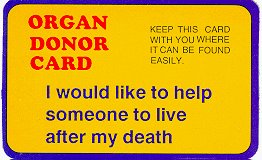alay na buhay
Last Friday, a group for Community and Family Medicine conducted a mass blood drive. All students from the Institute of Medicine were invited to donate blood and although I am unaware of the number of actual donors it is pretty obvious that the turn out was good. I, unfortunately, have yet to donate blood.
The first time I tried to donate blood two years ago I was deferred. No, not like a good half of my classmates who were deferred for being underweight or possibly anemic, I was deferred because I recently had an asthma attack. Not having my medications with me at the time of donation, the physician who examined me deemed it unwise to let me proceed with the blood extraction.
For yesterday’s blood donation let me just say that I deferred myself. I have just gotten over a week of rhinosinusitis and have been feeling light-headed and tired over having not enough sleep for the past couple of days. I do, however, look forward to the day I am finally allowed to give blood. I believe it’s a necessary learning experience for a would-be doctor like me besides being a much needed contribution to the hospital’s blood bank.
Yesterday, another group had a different activity. A symposium was held for medical and non-medical staff of the hospital. Speakers from National Kidney and Transplant Institute (NKTI) and Human Organ Preservation Effort (HOPE) talked about being organ donors.
There are two categories of organ donors, the non-living and the living. The living donors are further classified into living non-related and living related. The objective of the symposium was to increase awareness on organ donation programs, specifically the deceased or non-living organ donation. In the morning, the talk given to medical staff (clerks, post-grad interns and residents) touched on the need for referrals for organ donors and a lecture on maintenance of organ donors prior to retrieval of organs.
In the Philippines today, the top 3 organs transplanted are the liver, the kidneys and the cornea. The list of organs that can be donated include the eyes, heart, lungs, pancreas, bones and skin. The current program on organ donation still needs a lot of push. In the USA, the deceased organ donation program has already been maximized and they are now looking to improve organ donation from living donors. Spain also has a good program and they are even able to give incentives to donors, something we are unable to do.
As one doctor said, with the 5th leading cause of mortality being associated with trauma (vehicular accidents, etc.) and the 10th leading cause of mortality being renal failure, it is a wonder how the 5th leading cause cannot sustain the 10th leading cause.
I do believe that awareness about organ donation is important. Cultural and religious beliefs along with lack of knowledge about the need for organ donation are the main obstacles to the success of the program. With a 200-long waiting list for organ donors and only around 8 to 15 deceased organ donors a year it is evident that support from every medical institution is necessary.
Help someone to live. Be an organ donor. Check the back of your driver’s license and mark the box indicating that you would like to donate your organs after your death. Or better yet, get an organ donor card.
 “Don’t take your organs to heaven . . . Heaven knows we need them HERE.”
“Don’t take your organs to heaven . . . Heaven knows we need them HERE.” For more information call HOPE at 924-HOPE (924-4673)
Or contact
National Kidney and Transplant Institute
East Avenue, Quezon City, Philippines
Tel No: 924-3601 to 19 Local 2514
http://www.nkti.gov.ph


0 Comments:
Post a Comment
<< Home